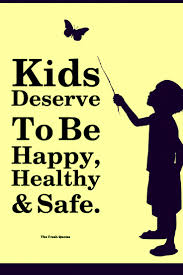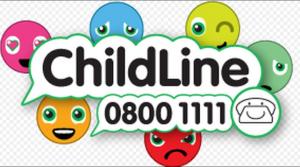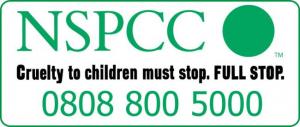Staying Safe
What does Staying Safe mean to you?
 that you are secure from liability to harm, injury, danger, or risk
that you are secure from liability to harm, injury, danger, or risk- that you have a safe place to live in
- that you are free from hurt, injury, danger or risk
- that you are able to arrive at your destination safe and sound
These are just some examples of what staying safe may mean to you. Feeling safe is not something we discuss often, yet if you think about it, most of us can say that we feel safe on a regular basis. So, feeling safe means that you do not anticipate either harm or hurt, emotionally or physically.
What are the kind of things that put us in danger and risk us being harmed?
- Sometimes we can put ourselves in danger or at risk without realising it. For example, we may feel under pressure from our friends to do something that they think is fun, brave or dangerous. A craze at the moment amongst young adolescent males is doing wheelies on the wrong side of the road, with no lights on their bikes. They would appear to be emulating the older boys who are riding around on stolen motorbikes with no helmets. There is a danger of injury to themselves and a risk to other people using the roads.
- Playing games such as chicken, on major roads, railways or near water. This could be a childish dare to run out across the road or train track, at a certain time. Playing around water, in the summer time young people have a tendency to want to cool off in rivers, lakes, or jump off bridges, putting themselves at risk of drowning or causing harm. All of these things have a potential to cause, harm or even death to us or others. We have a responsibility to ourselves and others to keep safe and not put ourselves at risk of harm.
Some Facts and Figures:
- 2016 – 29 young people drown, 5 were aged between 10-14 years of age, 1 was female and 4 males. 24 young people aged 15-19 years of age, 3 being female and 21 male. 5 of the 15-19 year olds had been drinking alcohol and 3 had taken some form of drug. The peak time for drowning accidents is July and August when the weather is a lot warmer.
- In 2017 Merseyside Police undertook Operation Brookdale, seizing and destroying over 300 off road vehicles, that had blighted communities across the region. The use of these bikes being linked to crime, fatal crashes, and anti social behavior.
- In 2016 there were 319 fatalities and 5,553 serious injuries across the UK from motorcycle accidents. These figures are for under 25 years of age, and are not all anti social riders, however, it shows the extent of the number of accidents on bikes.
- In the last three months on Merseyside, there have a number of deaths caused to members of the public by anti social behavior of scrambler bike riders.
Putting ourselves at risk of harm, hurt, injury or danger by using alcohol
- It is against the law to buy or drink alcohol if you are under the age of 18 years
- Drinking when under age with friends can lead to a number of unsafe situations, for example, you can become extremely sick leading to hospital admission, you may become disoriented and be hit by a vehicle. Or, you may be taken advantage of by older people, leading to you being sexually exploited or criminally exploited. Whilst we think that drinking may be fun and having a laugh things can change very quickly.
- Drinking very large amounts in one session can lead to acute alcohol poisoning which in turn can result in unconsciousness, a coma, or even death. If it all goes wrong, it’s essential to get emergency help
- Drink spiking can be linked to sexual assault and robbery, however, the majority of reported drink-spiking incidents are not linked to any additional crime. In these instances the motive may be ‘prank spiking’. Drink spiking is illegal, whatever the intent. This means that slipping alcohol or drugs into a friend’s drink as a joke is against the law. People who spike drinks can be charged, fined or jailed. The public perception is that drink spiking is limited to slipping drugs into an alcoholic drink. However, drink spiking can include:
- putting alcohol into a non-alcoholic drink (such as water, soft drink, non-alcoholic punch or fruit juice)
- adding extra alcohol to an alcoholic drink
- slipping prescription or illegal drugs (such as tranquillisers, amphetamines or GHB – also called liquid ecstasy) into an alcoholic or non-alcoholic drink
Some Facts and Figures:
- Hospital admissions for young people under 18 in the 3 year period 2011/12-2013/14 were 13,725. There were more admissions for girls than boys (4).
- Alcohol is a causal factor in more than 60 medical conditions, including: mouth, throat, stomach, liver and breast cancers; high blood pressure, cirrhosis of the liver; and depression
- Liver disease is one of the few major causes of premature mortality that is increasing, and deaths have increased by around 40% in a decade
- In 2015, there were over 8,000 casualties of drink driving accidents in the UK in 2013, including 220 fatalities and 1,160 serious injuries
- You can download statistics here
Putting ourselves at risk of harm, hurt, injury or danger by using drugs
- Taking, buying or selling street drugs is illegal
- The law on so-called legal highs changes on 26 May 2016. That’s when the ‘New Psychoactive Substances Act‘ comes into force, making it illegal to supply any ‘legal highs’ for human consumption. The changes in the law mean it’s now an offence to sell or even give psychoactive substances to anyone for free, even to friends.
- Some ecstasy pills are more powerful than others and could make you seriously ill, and some could be lethal. You can never be sure what’s in a pill – even if someone tells you what’s in it, they might be wrong – and you don’t know how you will react to a particular drug or particular dose. Everyone is different and ecstasy can affect people in different ways.
- The drug alprazolam is often called Xanax, after one of the most common brand names. We know that using alprazolam has caused some young people to end up in hospital, particularly when they have mixed it with alcohol.
- ‘Spice’ is a name used for a whole range of different drugs supposed to mimic the effects of cannabis. If you buy Spice there is no way to know which of these drugs you are getting and how dangerous it could be. As synthetic cannabinoids act like cannabis the effects – good and bad – are likely to be very similar to cannabis. Some users will feel happy and relaxed, may get the giggles, feel hunger pangs and become very talkative. Others may feel ill or paranoid.
- There are many myths about cannabis – that it’s safe because it’s natural, that using cannabis will completely ruin your life, your health and your future or that using cannabis will lead you into using other, more dangerous drugs. What is true is that cannabis can havesome very real, harmful effects on your mind and body, as well as creating longer-term problems: Cannabis effects how your brain works. It can make you feel very anxious and even paranoid, it can make it difficult for you to concentrate and learn, make your memory worse and make you feel less motivated.
How do I know what I’m taking?
The simple answer is that you don’t. In fact, you can never be sure that any powder, pill or liquid contains what you’re told it does.
The above is a very small number of the drugs available, and like it says no one really knows what they are taking, leading to risks, danger and harm to yourself. It can become extremely serious when a so called friend or acquaintance, starts giving you drugs to try for free. At some point you are likely to be asked to pay back for the drugs, if you cannot afford the price you can be threatened into doing things to pay off your ‘debt’, this can be criminal or sexual. If you need further information about drugs you can contact FRANK here
Staying Safe on the Internet
Some young people may think that you cannot be harmed using the internet, because after all most of the time you are safe, at home or indoors. The internet can be a fantastic place for children and young people to have fun and talk to friends, however, just like in the real world things can go wrong.
- Never agree to meet anyone away from your home who you have met online. This person may not be who you think they are
- Never give anyone who you have met online your personal details
- Never send any inappropriate photographs of your self to someone who you meet on line even if they continue to ask
- Never send any inappropriate photographs of yourself or a friend to people you know. This is against the law and you can be arrested.
- The person receiving the photographs may also share them online, then they will be on the internet for everyone to see.
If you are worried about online sexual abuse or the way someone has been communicating with you online you can contact Crime Exploitation Protection Command (CEOP) here where you will find lots of really useful information
Where can I get help if I feel threatened?
- ‘Safe Haven’ young people who are out in the community and feel unsafe or vulnerable to anti-social behavior or feel that they are being threatened can head to a Fire Station where they will see the Safe Haven signs illuminated at night. The Safe Haven programme was launched in 2011, and has seen many shops, community buildings and businesses becoming designated safe haven. For more information see here
- Speak to an adult, your parent, carer, a close relative or a teacher, if you have any serious concern about something or someone who may cause you harm or place you at risk
- Call Childline free on 0800 1111 or get in touch online here. You can talk to them about anything, no problem is too big or too small, however, you choose to contact them you are in control. It is confidential and you do not have to give your name if you done want to
- If you or a friend are in immediate danger call the Police on 999, otherwise call 101
- Integrated Front Door on 0151 606 2008 (9:00 am -17:00 pm) after hours 0151 677 6557 or email [email protected]


